The Red Sea is a perennial favourite among European divers. This long, thin sea separates Africa from Asia and links the Indian Ocean to the Mediterranean Sea. But it's the incredible visibility, warm water temperatures and impressive array of marine life that keep divers coming back for more. Not only is it a diver's paradise, but it also boasts great beaches and guaranteed sunshine - all at the end of a relatively short flight. Eager to learn more? Read on for our rundown of Red Sea facts and discover why it's a top dive destination...
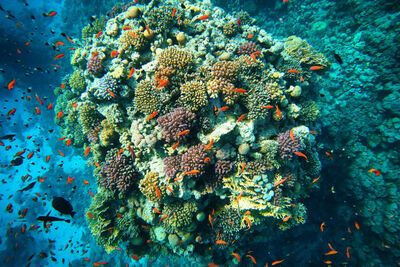
The Red Sea is small yet important
While barely making it into the list of the top 50 largest seas, the Red Sea is one of the busiest stretches of water on the planet. Its strategic location, together with the opening of the Suez Canal in 1869, has made the Red Sea one of the busiest shipping lanes in the world. Not only does the Red Sea allow ships a shorter trip between Europe and Asia, but it's also much calmer than rounding the Cape of Good Hope in South Africa.
The Red Sea stretches from the Gulf of Aden in the south up to the southern tip of the Sinai Peninsula in the north. It's 1,400 miles long and 221 miles wide at its widest point and is bordered by six countries: Egypt, Saudi Arabia, Yemen, Djibouti, Eritrea and Sudan. At its northern end, the Red Sea forks off into two gulfs. Travelling up the Gulf of Suez would take you to the Suez Canal and eventually the Mediterranean Sea, while heading up the Gulf of Aqaba would take you towards Jordan and Israel.
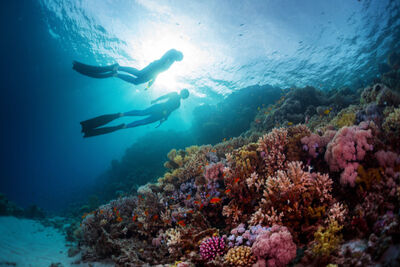
The Red Sea is a great place to learn to dive
Not only is it just a short flight from Europe, but the Red Sea has excellent dive conditions to suit all levels. While there are plenty of deep diving opportunities for the more experienced diver, it's also a fantastic place to learn to dive. The water is consistently clear, the currents are usually calm, and the sea temperature is comfortably warm. What more could you want?
The crystal-clear visibility is thanks to the region receiving very little rainfall and the fact that there are no major rivers flowing into the Red Sea. This lack of rain, together with high evaporation rates due to the hot climate, also makes the Red Sea very salty. As you can imagine, such high salinity makes the ten-minute float section of your Open Water course very easy. The other factor that makes the Red Sea a great place to learn to dive is the abundance of house reefs - you can step into the salty sea directly from your hotel's beach.
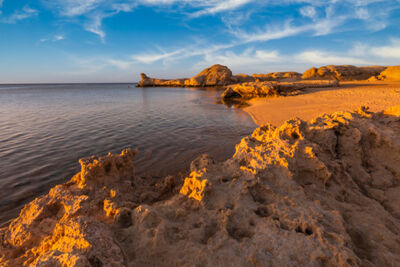
There’s plenty to do along the Red Sea’s coast, too
This Red Sea fact is one for the history enthusiasts. If you don't want to dive every day or if you're travelling with non-divers, don't worry - there's still plenty to do along the Red Sea's ochre-hued coastline. History buffs and hikers will enjoy a sunrise jaunt to the summit of Mount Sinai, where many believe God gave Moses the Ten Commandments. A day trip here also includes a visit to Saint Catherine's Monastery: the world's oldest continuously inhabited Christian monastery.
Looking for more fun-filled activities? You can also explore the surrounding desert. The sandy surrounds offer plenty of opportunities to enjoy a camel ride, desert quad biking, or a dune buggy safari. And if you're not a fan of getting sand in all the wrong places, you can also have fun on the Red Sea's surface by parasailing, kiteboarding, or desperately clinging to a high-speed banana boat (you'll enjoy it, we promise).
For those intrigued by ancient Egypt, you could tack on a few extra days to your dive holiday to cruise down the Nile River in a steam ship. After seeing the sights in Cairo (including the legendary pyramids), cruise calmly down the Nile to take in the ancient sites of Luxor and the Valley of the Kings.
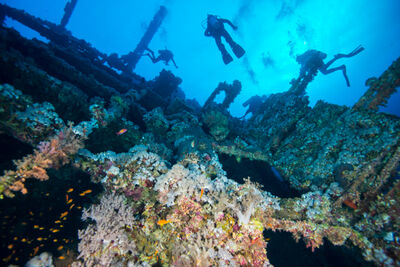
The Red Sea is home to superb wreck diving
You don't have to be an Egyptologist to enjoy history on your Red Sea diving holiday. For those interested in the more recent past, the Red Sea has some excellent wreck dives. The most famous wreck is the SS Thistlegorm, a British cargo ship operating during WWII that was sunk by a German bomber aircraft in 1941. This wreck, accessible from Hurghada and Sharm El Sheikh, attracts divers wishing to peep at its military cargo: trucks, motorcycles, Wellington boots, rifles, Universal Carrier armoured vehicles, and various aeroplane parts are all on display in the underwater museum.
If wreck diving (somewhat ironically) floats your boat, Hurghada is a great option. Not only will you be able to dive the Thistlegorm wreck from here, but there are a further half dozen wrecks to explore. The wrecks of El Mina, Suzanna and MS Balena are all popular, while technical divers can also venture down to 55 metres to see the huge propeller of the Rosalie Moller wreck.
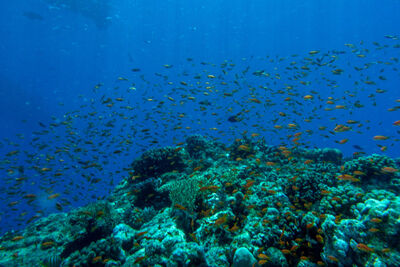
The Red Sea offers great biodiversity
Last but not least on our list of Red Sea facts relates to its incredible biodiversity. Whether you like your sea creatures big or small, the Red Sea has plenty to keep an eye out for. Much of the Red Sea's coastline features fringing reef, which is the building block for a marine ecosystem. The nooks and crannies of the corals provide shelter for myriad creatures; tiny critters make their homes within the reef, attracting bigger creatures in search of food, which, in turn, draw even larger predators, continuing the cycle up the food chain.
Macro photographers will love the variety of colourful nudibranchs dotted along the reef, as well as hunting for more cryptic critters such as frogfish. Turtles are regularly seen during dives, while those diving close to shore may also spot a dugong munching on seagrass. The Red Sea has its fair share of the big stuff, too. Ten species of shark inhabit the sea - including hammerheads, threshers and whale sharks - while everybody's favourite, the dolphin, has also been known to make an appearance.
















